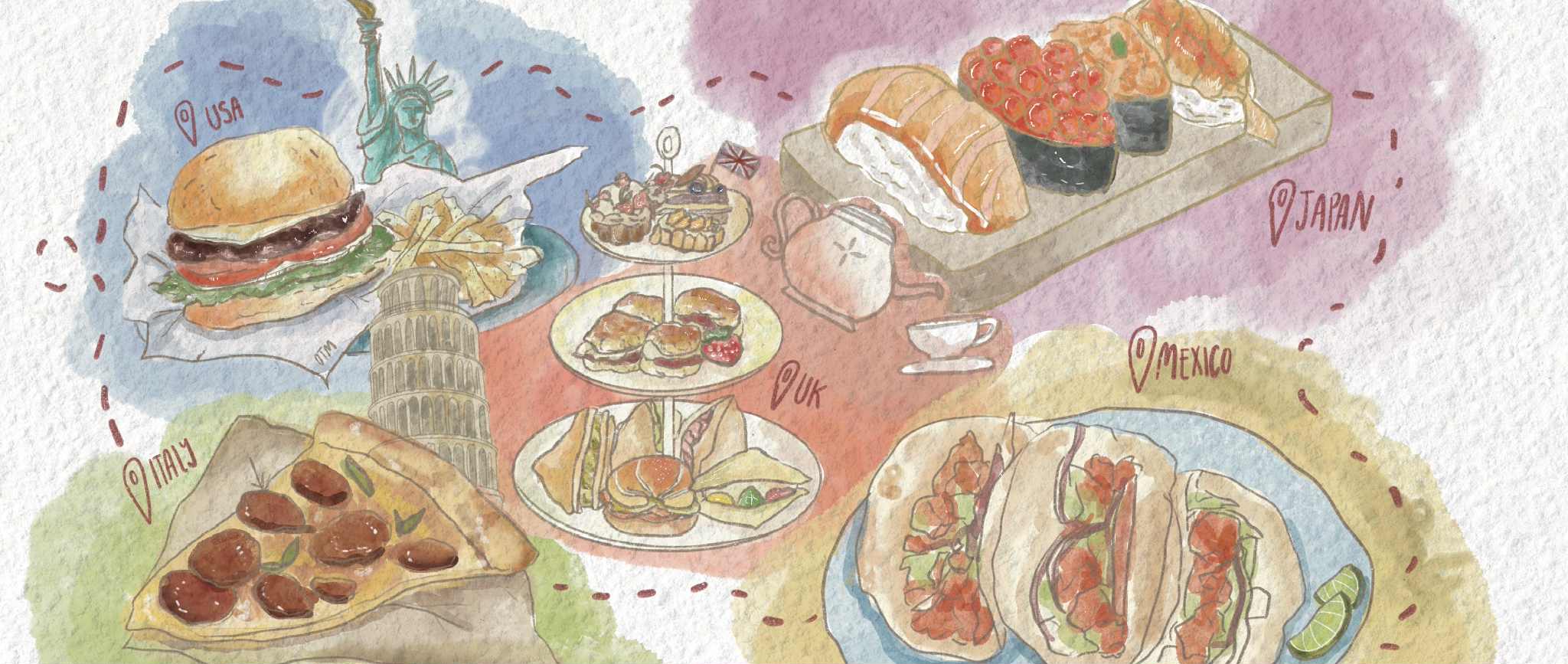“Pumpkin Cranberry Crisps,” “Pecan Pumpkin Oatmeal,” “Pumpkin Gnocchi,” “Pumpkin Bagels,” “Pumpkin Body Butter.” From produce to pasta and even skin care aisles, America’s favorite gourd has begun its annual Trader Joe’s invasion. Although its arrival creeps in earlier each year, there’s nothing unexpected about pumpkin’s return to grocery stores: pumpkin spice has thrived on the market since 1933, launched to elevated fame after Starbucks first debuted the Pumpkin Spice Latte in fall 2003. Today, pumpkin spice persists as a seasonal market raking in over $500 million annually. It’s only a matter of time before the Pumpkin Spice Latte (PSL) is back at the Arbor, Summit Cafe and Buchanan coffee cart, ready to caffeinate our campus. But why exactly do fall flavors appeal so strongly to college students and beyond?
Much of pumpkin spice’s commercial success originates not from its taste, but rather its smell. Traditionally, fall flavors are defined by an aromatic blend of ground spices: cinnamon, nutmeg, ginger, cloves and allspice, which contribute a bright and peppery warmth to the pumpkin’s mildly sweet and earthy notes.
The sensory qualities of these key ingredients are strongly influenced by their volatile constituents. Volatile constituents are functional groups in organic compounds which readily vaporize to produce distinctive aromas. Once evaporated, these flavor compounds — notably esters, terpenes, pyrazines and aldehydes — are detected by the olfactory system and perceived as smells, influencing approximately 80% of taste perception.
When unique volatile compounds contrast and complement each other in perfect balance, a delicious flavor pairing is created. Autumnal baked goods exemplify this: pumpkin spice blends consist of numerous volatile compounds, including cinnamic aldehydes in cinnamon, eugenol in allspice and zingiberene in ginger, which float to the roof of the nasal cavity and activate olfactory sensors. The scent and flavor of pumpkin itself, however, is near negligible.
There are roughly 400 scent receptors in a human nose, each sensitive to activation by specific subsets of volatile odor molecules. Thus, scent receptors function as a “lock and key” mechanism similar to enzymes and substrates. When a unique aroma compound is detected by its corresponding receptor in the nasal passage, olfactory sensory neurons fire. Their signals are received by the olfactory bulb and sent toward the olfactory cortex, the cortical region which identifies smells. It’s conveniently located next to the amygdala and hippocampus — key limbic system structures which generate emotions and retrieve memories, respectively.
This anatomical proximity allows for direct neural connections between the olfactory cortex and limbic system. Over time, these pathways are reinforced and scents become intertwined with their emotional association — unlike sight and sound signals, which must first travel through the thalamus. As a result, memories associated with aromas are often more evocative, emotional and positive.
Although controversial, the smell of pumpkin spice is often undeniably comforting. It’s sweet, spicy and strongly associated with autumn nostalgia. This results from the neuroanatomical connection between memory and smell. There’s an evolutionary advantage to this association: Odor-evoked memories helped early humans build mental maps of their environments and even develop social relationships. Consequently, our sense of smell remains closely linked with memory through the structure of our skull and brain.
Pumpkin enthusiasts crave more than just cinnamon and spice: They anticipate the moment aromatic compounds strike their scent receptors to trigger feelings of warmth, comfort and nostalgia. Smell-associated memories — even implicit ones — are capable of improving mood, disrupting cravings and even reducing stress without our conscious awareness. Pumpkin spice flavorings specifically are associated with fall holidays when the majority of Americans report happiness. Thanksgiving, for example, has ranked among the top three happiest days of the year since 2008.
Furthermore, embracing seasonal menus offers numerous health benefits. Sociocultural patterns in Blue Zone communities suggest that celebrating holidays supports a healthier and happier life, fostering gratitude and social connections in resilience to stress. Indulging in nostalgia, even through food, can encourage optimism and release dopamine. Finally, welcoming pumpkin spice each autumn instills it with symbolic meaning. The spice blend becomes a ritual to embrace fall as a temporal landmark and celebrate new beginnings. Adopting this perspective boosts motivation, and embracing rituals can reduce anxiety.
Pumpkin spice is more than a Trader Joe’s epidemic — it’s a ritual of renewal, catalyst for memory and often a direct dopamine boost. Decidedly, a spice blend that’s earned its place in grocery aisles nationwide from August to November. If you choose to indulge in a PSL this season, pause to appreciate the perfect blend of volatile compounds and fond memories which instill the beverage with unique warmth. That smell is a medley of your distinctive fall memories, and the flavor lands differently on every tongue.





















Sceince: something that the republitards do’nt beleive in due to the fact that they are morrons. They do’nt beleive in global warming because they are hate-filled idoits who do’nt no that it takes a village to save the planet. Oh how I despize those FoxNews-watching rednecks.